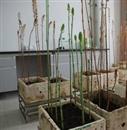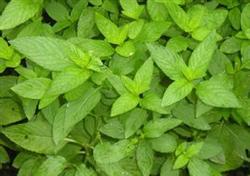How to manage bottle-planted Gastrodia elata

Put the installed gastrodia elata bottles on the bed frame, one bottle by one bottle, if there is indoor heating equipment, you can plant hemp in mid-October; if there is no heating equipment, you need to plant hemp in February to March. In autumn and winter, after 50 days of dormancy, in early December, artificial heating measures were adopted to increase the indoor temperature from 1~5℃ to 11~12℃, Armillaria mellea began to grow, and promoted Gastrodia elata to be inoculated with Armillaria mellea as soon as possible. At this time, Gastrodia elata gradually germinated. Twenty days later, at the end of December, the temperature rose to 15 ° C. After another month (the end of January), the temperature rose to 19~22℃, Armillaria mellea and Gastrodia elata have entered the growth season. After 4 months (May), the upper part of the bottle is covered with young gastrodia tuber (rice hemp and white hemp), some grow to the bottom of the bottle. After a period of time (June), Tianma tubers continue to grow and become larger and thicker. At this time, if 1% sugar water is sprayed into the bottle, adding 10 mg of vitamin B1 to the water will increase the yield of Gastrodia elata. However, it is necessary to add less water (so that the humidity of the culture medium is about 60%) to prevent water from being rotten. In the whole process of bottle cultivation, it is generally not necessary to water the bottle, and the humidity of the culture medium can be maintained at 60%. If the temperature exceeds 26℃, the humidity exceeds 70%, or the temperature fluctuates, the rotten hemp phenomenon will occur. Below 10℃, gastrodia elata growth is blocked, into the body sleep state. When the humidity of culture medium was 30%, Gastrodia elata grew poorly. Although bottle cultivation of Gastrodia elata can increase yield, but because the bottle volume is too small, can not provide more nutrition sources for Armillaria mellea and Gastrodia elata, so that the growth of Gastrodia elata is limited, the growth of arrow hemp is very few, the vast majority of small and medium-sized tubers, can only be used for the development of seed cultivation.
- Prev

Control measures of gastrodia elata pests
Gastrodia elata likes to grow in warm and humid sandy (or decayed leaves) soil, and the requirements for temperature and humidity are stricter. However, along the Great Wall in northern Shaanxi is located in the temperate zone, dry and rainy in summer, which is not conducive to the growth and development of Gastrodia elata. In order to obtain a bumper harvest of Gastrodia elata, the following measures should be taken in summer management: ① Shading. Summer...
- Next

Three-dimensional cultivation of soybean Gastrodia elata
In order to develop the local economy, increase farmers' income and successfully introduce the demonstration cultivation of spice crop peppermint, we found out the key technology of peppermint planting and accumulated experience for large-scale popularization. 1. Seedling raising and rhizome propagation. The root cultivation was carried out in late April or late August. Choose to grow sturdily in the field.
Related
- Fuxing push coffee new agricultural production and marketing class: lack of small-scale processing plants
- Jujube rice field leisure farm deep ploughing Yilan for five years to create a space for organic food and play
- Nongyu Farm-A trial of organic papaya for brave women with advanced technology
- Four points for attention in the prevention and control of diseases and insect pests of edible fungi
- How to add nutrient solution to Edible Fungi
- Is there any good way to control edible fungus mites?
- Open Inoculation Technology of Edible Fungi
- Is there any clever way to use fertilizer for edible fungus in winter?
- What agents are used to kill the pathogens of edible fungi in the mushroom shed?
- Rapid drying of Edible Fungi

